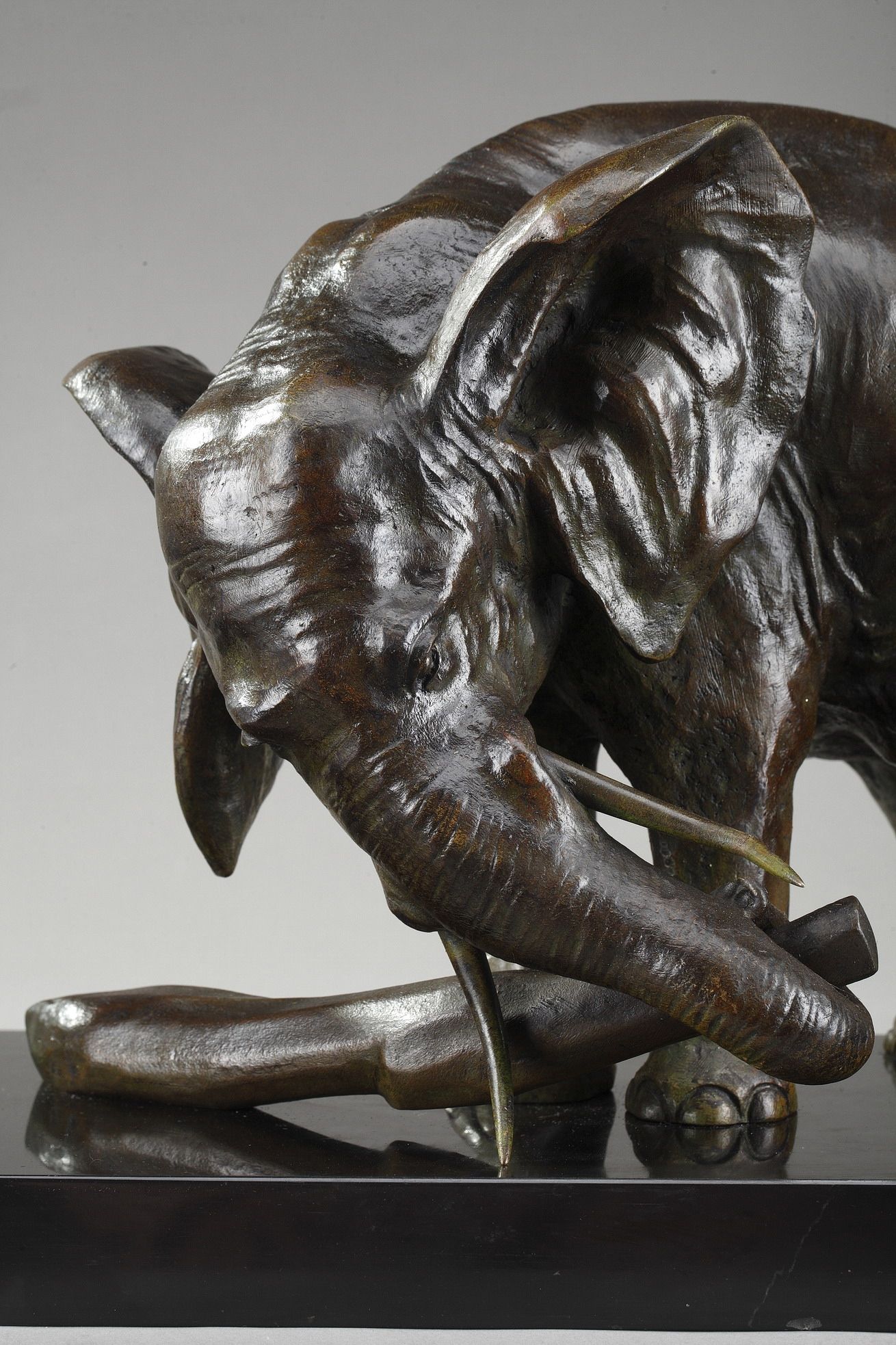Animal sculpture and decorative arts in the 19th century
28.02.11
A popular genre
The Romantic movement , in addition to its decisive influence on sculpture in portraiture and the treatment of certain types of subjects, fostered the emergence of a particular genre: animal sculpture.
Animals fascinated the Romantics because they represented the natural world with its inherent violence and raw emotion. Animal sculptors continued a path already opened by English painters and taken up again by Géricault, Horace Vernet, and the Romantics of the 1820s .
Animal sculptors
The work of Antoine-Louis Barye is at the pinnacle of the genre and he led many sculptors in his wake, such as Alfred Barye, his son, or Pierre-Jules Mène and his son-in-law Auguste Cain, known as the sculptor of lions and tigers , who had made the representation of these big cats his specialty.

"Dog on point" by Pierre-Jules Mène
Despite the reluctance of the academic community, for whom the animal world belongs to the minor arts, critics and the public are full of praise for this production, which clearly influences the decorative arts.
Antoine-Louis Barye contributed to the creation of goldsmithing pieces in the animal style. Indeed, Fourier, with whom he began his apprenticeship at the age of fourteen, worked for goldsmiths to whom he supplied matrices used to make repoussé work.
"The Elephant and Her Baby Elephants" by Ulisse Caputo
In this workshop, Barye observed the making of the gold snuffboxes, commissioned by Napoleon Bonaparte from the goldsmith Martin Guillaume Biennais and intended for his distinguished guests.
In 1820, Antoine Louis Barye was employed by the goldsmith Jaques-Henri Fauconnier , a student of Odiot, who was then at the height of his success, enjoying the protection of the Duke of Angoulême and the Duchess of Berry.
Given his training and according to commissions, Antoine-Louis Barye created numerous pieces of goldsmithing, such as inkwells, fireplace sets, and candelabra. Animal sculptors like Antoine-Louis Barye produced many decorative objects.
Art objects with animal decoration
Many art objects featuring animal motifs appeared: storks, turtles, lizards, and frogs appeared on torches, candelabras, and boxes, each reflecting in its own way the romantic fervor that swept through Europe in the 19th century.
"Two Seagulls on a Wave" by Enrique Molins
Bibliography:
- Michel Poletti, Alain Richarme, Barye: catalogue raisonné of sculptures, Gallimard, Paris, 2000
- Charles Saunier, Barye, F Rieder & Cie, Paris, 1925
- Complete collection of art bronzes by PJ Mène and A Cain, hunting scenes – animals, Susse Frères, Paris, 1907



